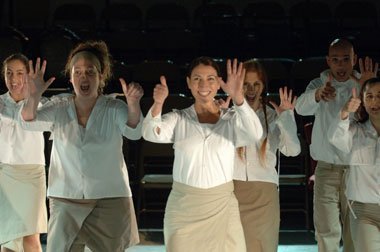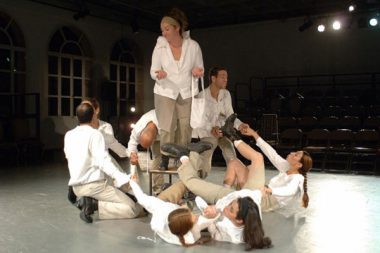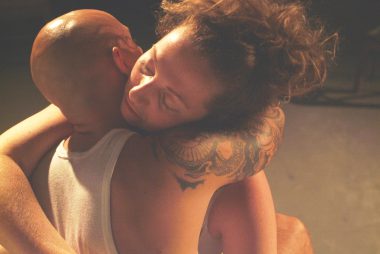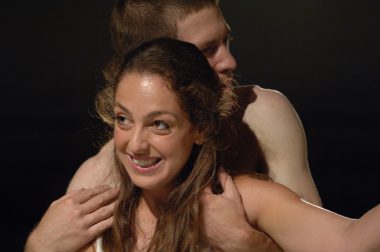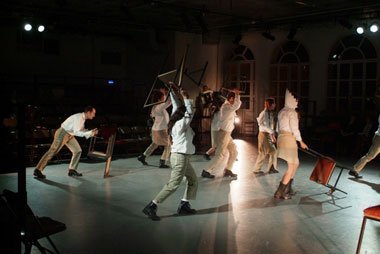or Landscapes are Never Lost
Based on a book by Tamar Berger
Created by Ruth Kanner
Additional documents and Adaptation: Avner Ben-Amos and Ruth Kanner
Set and costumes design: Sivan Weinstein
Music: Shoshana Reizman
Lighting design: Shakéd Vax
Actors: Dori Angel, Dafna Arcavi, Ronen Babluki, Shirley Gal, Tali Kark, Adi Meirovitch, Natalie Feinstein
Musician: Amit Bar-Tzedek
Premiere: 2004
A penetrating investigation of the historical layers of a shopping mall in Tel Aviv, performed as a story-telling theater that engages various theatrical means to ask challenging questions about the roots of the Zionist existence in Israel.
Dionysus at the Dizengof Center presents the story of a place: the area around the intersection between Dizengof St. and King George St. in Tel-Aviv, which is also the location of an actual shopping mall (“Dizengof Centre”). This is the story of a piece of land that holds several layers of memories – of people, objects and events that intermingle and intertwine. One question inspires the story: what was here before? The answer is given in the performance through a process that resembles an archeological dig, going deeper and deeper into the past. Beneath the glamorous shops that now constitute Dizengof Centre lies the Nordia neighborhood, made up of shabby huts, peopled by the Jewish refugees who had arrived penniless from Eastern Europe during the 1930s and 1940s. Beneath Nordia one can discern the verdant leaves of the vineyards that were once cultivated by the Arab peasants who lived in the villages of Manshiée, Salamé, and Soumeil, situated to the north of Jaffa. And beneath the vineyards? The eternal sands of the Mediterranean shores.
Dionysus at Dizengof Center is also the story of the families whose lives were tied to the place, each one through a different kind of cord: the family of Arie Piltz, the entrepreneur who built Dizengof Centre during the 1970s; the Goldman family, who arrived from Poland in the early 1930s, settled in Nordia, and opened a small carpentry business in their hut; and the family of Adiv Hinawi, one of the wealthiest Arab businessmen in Jaffa, which owned the land in the Nordia area until it was expelled in 1948. The texts used to narrate this place are many and diverse: letters and protocols, poems and inventories, memoirs and excerpts from novels, written by bureaucrats and soldiers, residents and refugees, novelists and poets such as Yaakov Shabtai, S. Yizhar and Avot Yeshouroun.
These texts create together a symphony of different voices that complement, reinforce, and at times contradict each other. They recreate family histories that are woven into the public, political history, and give them a meaning of their own. This is a story-telling theater that engages various theatrical means to ask penetrating questions about the roots of the Zionist existence in Israel.
![]() |
| ![]() | Join Our Newsletter >>
| Join Our Newsletter >>

